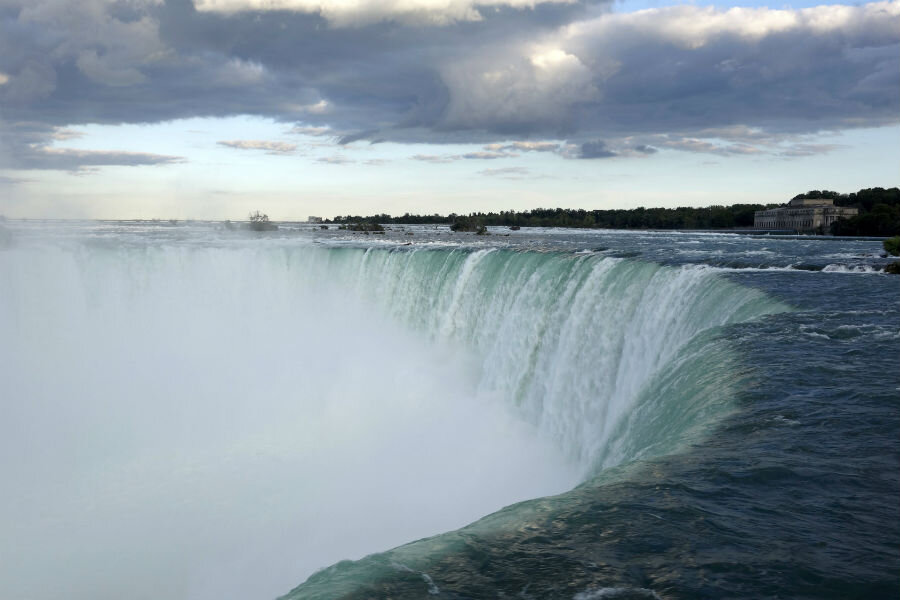How safe is Niagara Falls?
Loading...
Police have resumed their search for a woman who plunged over Niagara Falls on Saturday evening.
New York State Park Police say a woman in her 40s went over the falls at around 6pm at Prospect Point, on the United States' side of the falls. Park Police spokesman Randy Simons says it appeared the woman intentionally entered the water to "harm herself."
State park police officers told local news station WIVB-TV that the woman reportedly went over the falls at Prospect Point on the American side in what they called an "intentional entry."
The woman, whose name has not been released, is presumed dead. The Buffalo News reports crews from the Niagara Falls Fire Department and Maid of the Mist, a tourist boat that chugs along the Niagara River at the base of the falls, were participating in the search.
Authorities have in custody a video of the incident shot by a bystander, WIVB-TV reports.
Niagara Falls is a series of three massive waterfalls on the border between the United States in New York and Canada in Ontario. The water that races over the edge of Horseshoe Falls, the biggest of the three falls, runs about 70 miles per hour, pushing six million cubic feet of water per minute over the falls to a 170 foot drop, at a temperature that typically hovers in the 30s.
“We get about 11 million people a year here who view that annually — this is the first occurrence of this nature that I can recall,” Niagara Parks Police Chief Doug Kane told the Toronto Star, which reported on a fatality at Niagara Falls when a university student in Canada fell in 2011 when she slipped from a ledge after posing for a photograph.
According to the Star, since 1903 only seven deaths involving people going over Niagara Falls have been judged to be accidents. Only four people are reported to have survived a fall with no physical protection.
Every year, between 20 and 25 people commit suicide at Niagara Falls. It is also a popular attraction for daredevils, with 16 recorded daredevils going over the falls and 11 of them surviving, the Star reports.
The first to go over Horseshoe Falls in a barrel and survive was Annie Edson Taylor, who took the plunge in October 24, 1901 – her 63rd birthday.
According to several newspapers, this was Ms. Taylor's advice to those aspiring to repeat her stunt: "Don't try it."








